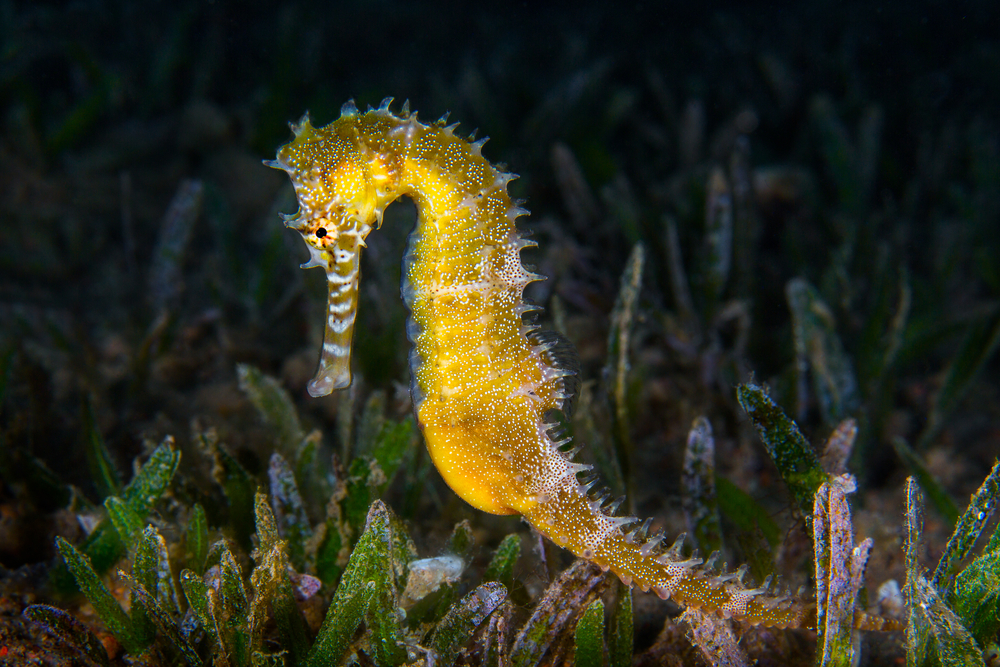Seahorse Husbandry: The Art of Cultivating Ocean Treasures
Delve into the enchanting world of seahorse husbandry, where aquarists cultivate these mesmerizing marine creatures. From intricate tank setups to specialized diets, discover the challenges and rewards of nurturing these delicate ocean jewels. Uncover the secrets behind successful seahorse breeding programs and their impact on conservation efforts worldwide.

The Allure of Seahorses in Aquariums
Seahorses possess an undeniable charm that makes them a prized addition to any aquarium. Their distinctive horse-like head, curled tail, and upright swimming posture set them apart from other marine life. These captivating creatures come in a variety of species, each with its own unique coloration and patterns. From the tiny pygmy seahorses to the larger pot-bellied seahorses, there is a species to suit every aquarium enthusiast’s preferences.
The popularity of seahorses in the aquarium trade has grown significantly in recent years. However, this increased demand has raised concerns about the impact on wild populations. As a result, there has been a push towards sustainable seahorse husbandry practices and captive breeding programs to reduce the pressure on wild-caught specimens.
Creating the Perfect Seahorse Habitat
Successful seahorse husbandry begins with creating an environment that closely mimics their natural habitat. Seahorses are found in various marine ecosystems, including coral reefs, seagrass beds, and mangrove forests. Replicating these environments in an aquarium setting requires careful planning and attention to detail.
A typical seahorse aquarium should have a minimum capacity of 30 gallons, with larger tanks preferred for multiple specimens or larger species. The tank should be equipped with a robust filtration system to maintain excellent water quality. Seahorses are sensitive to water parameters, so regular monitoring and maintenance are crucial.
Aquarists must provide ample hiding spots and anchor points for seahorses to grasp with their prehensile tails. This can be achieved through the strategic placement of artificial corals, seagrass, and other decorative elements. Live rock and macroalgae can also be incorporated to create a more natural-looking environment and aid in water purification.
Specialized Diets and Feeding Techniques
One of the most challenging aspects of seahorse husbandry is providing an appropriate diet. In the wild, seahorses are ambush predators that feed primarily on small crustaceans. Replicating this diet in captivity requires careful planning and often involves cultivating live foods.
Seahorses typically require multiple feedings per day, with a diet consisting of enriched brine shrimp, mysid shrimp, and other small crustaceans. Some aquarists also supplement their seahorses’ diets with specially formulated frozen foods. The key to successful feeding is to ensure that the food particles are the appropriate size for the seahorse species being kept.
Feeding techniques can also play a crucial role in seahorse husbandry. Many aquarists use target feeding methods, where food is introduced directly in front of the seahorse using a pipette or feeding stick. This approach helps ensure that each seahorse receives adequate nutrition and reduces competition for food.
Breeding Seahorses in Captivity
Seahorse breeding in captivity has become an essential aspect of conservation efforts and sustainable aquarium practices. While challenging, successful breeding programs have been established by both hobbyists and professional institutions.
The seahorse reproductive cycle is unique among fish species. Male seahorses carry and give birth to the young, a process that involves elaborate courtship rituals and the transfer of eggs from the female to the male’s brood pouch. In captivity, providing the right environmental cues and maintaining optimal water conditions are crucial for initiating breeding behaviors.
Once the male gives birth, the tiny seahorse fry require specialized care. They must be separated from the adults to prevent predation and provided with a diet of newly hatched brine shrimp and other microscopic organisms. Raising seahorse fry to adulthood is a delicate process that demands patience, skill, and attention to detail.
Conservation Implications of Seahorse Husbandry
The development of successful seahorse husbandry techniques has significant implications for conservation efforts. Many seahorse species are threatened in the wild due to habitat destruction, overfishing, and collection for the aquarium trade and traditional medicine markets.
Captive breeding programs have the potential to reduce the pressure on wild populations by providing a sustainable source of seahorses for the aquarium trade. Additionally, these programs contribute valuable knowledge about seahorse biology, behavior, and reproductive strategies, which can inform conservation efforts in the wild.
Some aquariums and research institutions are now using their expertise in seahorse husbandry to support restoration projects. These initiatives involve breeding seahorses in captivity and releasing them into protected areas to bolster wild populations.
In conclusion, seahorse husbandry represents a fascinating intersection of art and science in the world of aquarium keeping. As our understanding of these remarkable creatures continues to grow, so too does our ability to provide them with optimal care in captivity. By mastering the intricacies of seahorse husbandry, aquarists not only create stunning displays but also contribute to the conservation of these ocean treasures for future generations to admire and protect.





